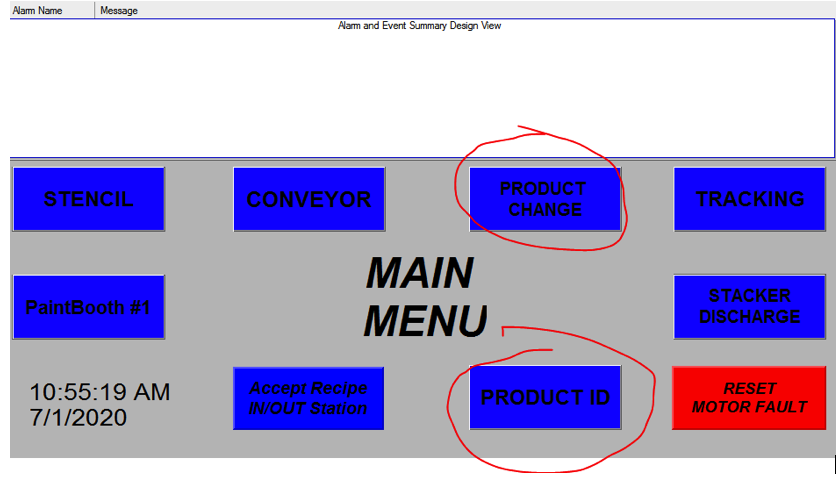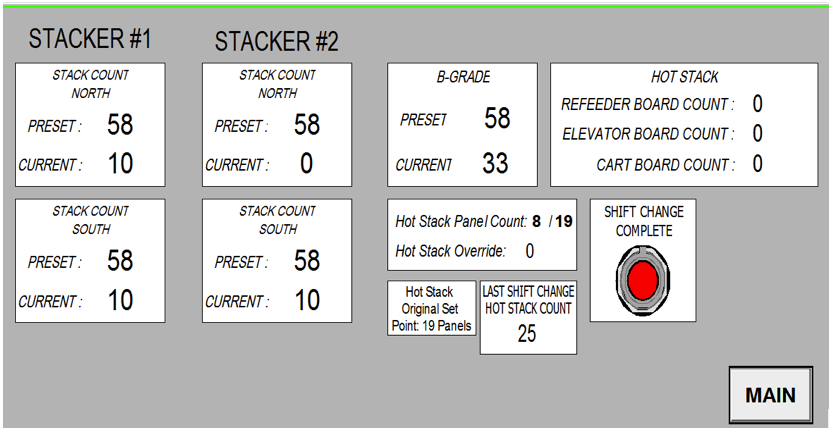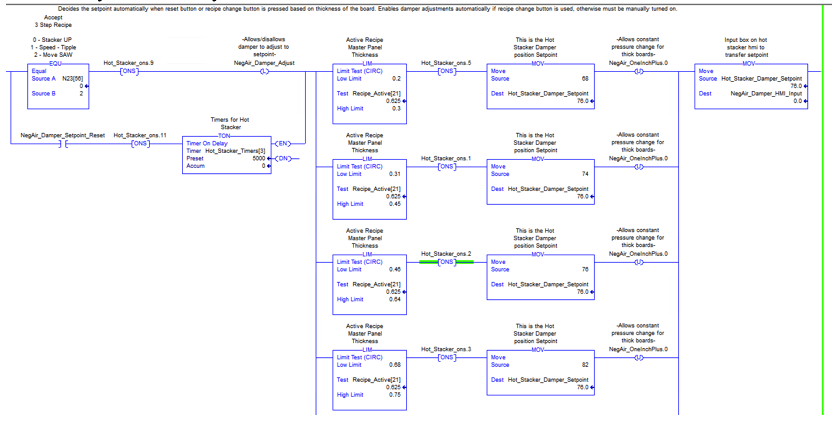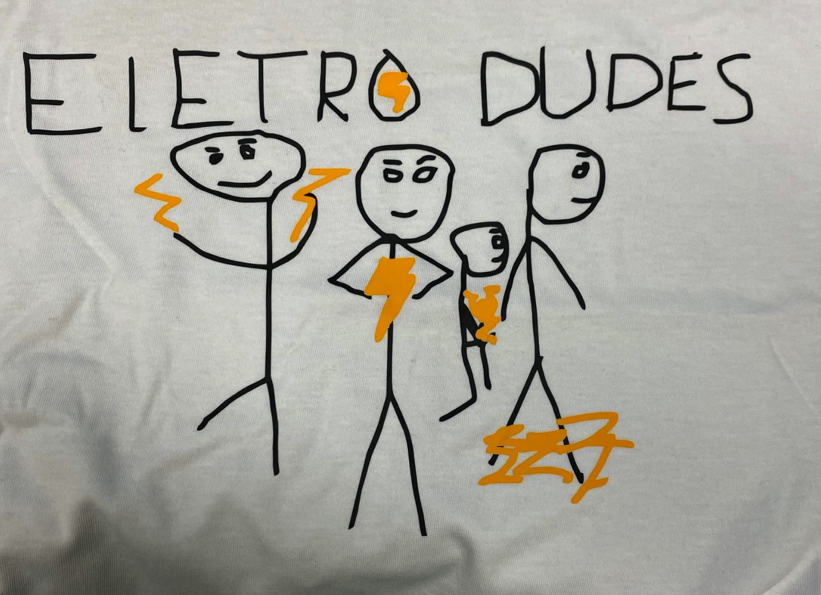Did I Break the Mill? Probably
6 juillet 2020 13:38 2 commentaires
Oi welcome back to the next most exciting thing since video chats with your boss where he accidentally turned himself into a potato on zoom. Today I’m talking about the projects I’ve been assigned and a few projects I’ve assigned myself.
My blog will mention the use of HMIs and the PLC. In short, the HMIs are electronic display stations set around the mill that can be linked to different tags. These tags come in an assortment of different data types, but just know that they store data to power and operate the mill. The PLC is where these tags are stored. Inside the PLC is also the logic that decides what the machines do and when. This is a very simple explanation, but it will be helpful for explaining my projects. I will show an example later in the blog to clarify (I wish someone explained what HMI and PLC meant when I got here because I was confused for a very long time).
When I first started, I hadn’t learnt much, so I help my friend Matt with moisture samples. Basically, we took strands off the weigh belts where the moisture meters are and measured the accuracy of the readings. By measuring the difference between wet and dry weight, we were able to determine the moisture percentage. The number of variables that affected our results was high, starting with our scale that only read to half a gram. Any fluctuation gave us a large error, so we had to order a better scale. Next, we discovered that the buckets and pans we were using had different weights depending on if they were hot or cold. It wasn’t a large difference, the 800-gram buckets weighed about a gram less when hot, but that gram made a large difference when doing the math. Pre-heating the buckets became necessary. The buckets, when full, also took an incredibly long time to dry, but that couldn’t be avoided. After about a month and a half of trialing, we finally found a pattern that we could implement. We handed the procedure off to the lab to continue maintenance.
About a month ago, I got my permissions to edit the HMIs and PLCs. Learning the HMI software was super fun. It actually felt as if I was making a difference for the company. It gave me something to be proud of.
My first solo project was to transfer two HMI screens to another station for sake of convenience. This project wasn’t hard by any means but starting with it was beneficial to learning.

Figure 1: the HMI I modified as my first project. The circled elements are what I made
The finishing end workers started to suggest projects that would cut unnecessary movement and overall improve their procedure. I took it upon myself to make a display for shift change with all the information they needed on it. After about a week of it being active, the amount of positive feedback I received feedback made me happy. It felt like I was advocating for a part of the mill that wasn’t looked after as well as the others. It made me appreciate the job a little more and I hope to tackle more problems for them.

Figure 2: the shift change HMI I created
The HMI software was much easier to learn than the PLC software. Mainly because it was much harder to shutdown the mill from the HMI software but that’s besides the point (although I did push a few buttons I probably shouldn’t have). My first PLC project involved coding a program that automated our “giant board vacuum” for lack of a better term. Making the logic was like a giant puzzle. There are certain criteria that had to be met in an orderly way that required a little creativity to bypass the simplicity of the HMI. The Sunday evening when I left my project for my days off, I was excited to go back to work. I thought about the different solutions during dinner that I could implement. It was weird that it made me think that much about it outside of work. At the moment, my program still needs to be tested, but I will write about anything that I accidentally break so stay tuned!

Figure 3: ladder logic which chooses a setpoint for our neg-air damper (giant board vacuum) based on board thickness
I am currently working on a program that adjusts the saws depending on board dimensions and any wear-and-tear from the saw arbors. It takes the running average of the board width/length depending which saws its going through and defines an offset to meet our dimension quota.
If you know me, you know I love a good joke. As a “self-assigned project,” I took it upon myself to create a name brand for the four of us in maintenance. I would like to introduce you all to the “Electro Dudes.” It was originally going to be the “Moisture Buds” for reasons mentioned earlier but that one didn’t slide. Anyway, I made T-shirts with a logo I made because I thought it would be funny.

Figure 4: my logo on a T-shirt 🙂
Turns out, in my adrenaline-fueled laughing fit, I forgot the “C” in Electro, so we are currently working on a rebranding phase (I know it’s pretty sad, so I don’t want to hear about it thank you very much). P.S. Craig please come pick up your shirt, you can just draw the C on.
Lastly, I made a Tik Tok. It is quite self-explanatory. Enjoy.
Thanks for reading this far, I look forward to learning and hopefully making you all laugh a little. Until next time.

2 commentaires
Thanks for the education and the humor!
Enjoyed your blogs and sense of humor! Welcome to Tolko and hope you have a great summer!